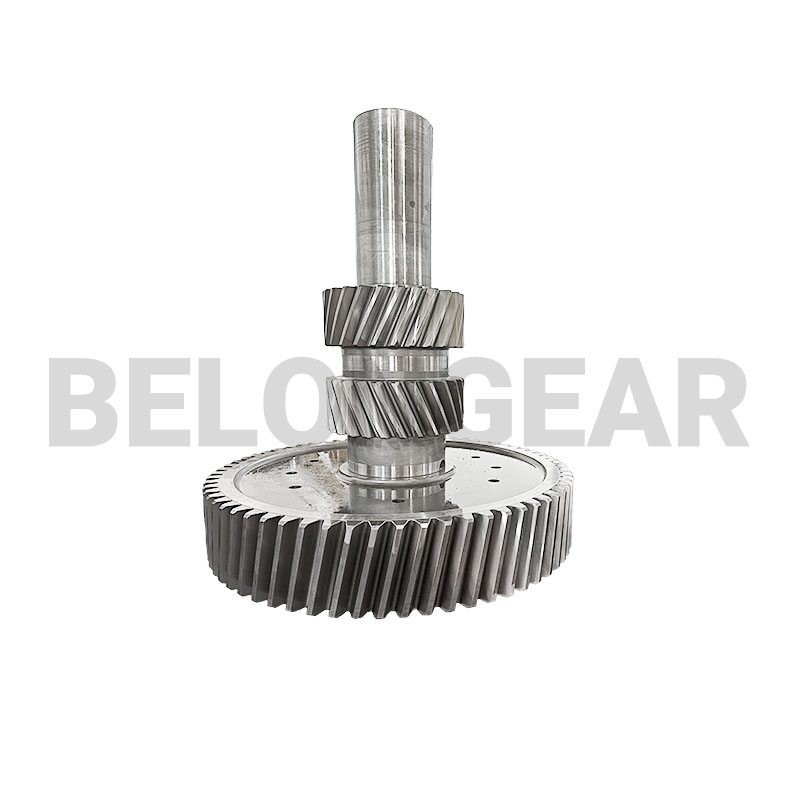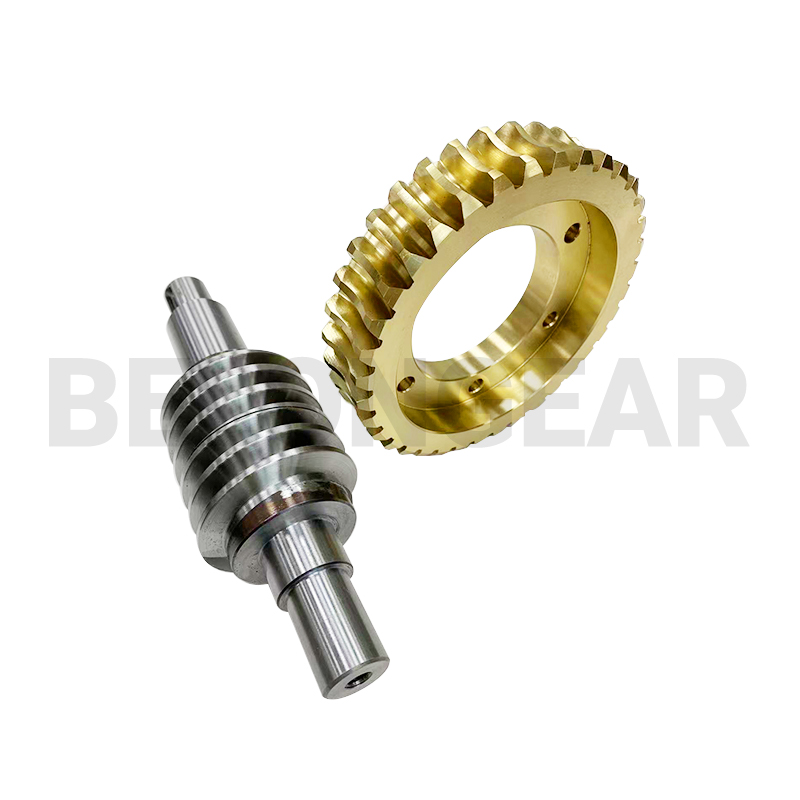1.Types of Gear Materials
Steel
Steel is the most commonly used material in gear manufacturing due to its excellent strength, toughness, and wear resistance. Different types of steel include:
- Carbon Steel: Contains a moderate amount of carbon to enhance strength while remaining affordable. Commonly used in low to medium-load applications.
- Alloy Steel: Mixed with elements such as chromium, molybdenum, and nickel to improve corrosion resistance, hardness, and durability. Ideal for heavy-duty industrial gears.
- Stainless Steel: Known for its corrosion resistance, making it suitable for environments exposed to moisture or chemicals. Commonly found in food processing or pharmaceutical machinery.
Applications: Industrial machinery, automotive transmissions, heavy equipment.
Cast Iron
Cast iron offers good wear resistance and vibration-damping properties, though it is brittle and not suitable for applications with high impact loads.
- Gray Cast Iron: Used for gears that require vibration reduction and noise control.
- Ductile Iron: Has better tensile strength than gray iron, suitable for moderate loads.
Applications: Gearboxes for pumps, compressors, and agricultural equipment.
Brass and Bronze
These materials provide low friction and good corrosion resistance, making them ideal for specific applications. They also offer self-lubricating properties, which minimize the need for external lubrication.
- Bronze Gears: Used in worm gears due to their excellent wear resistance.
- Brass Gears: Lightweight and corrosion-resistant, used in small machines and marine applications.
Applications: Worm gears, marine equipment, and small devices.
2.Heat Treatment Processes in Gear Manufacturing
Heat treatment is a vital process in gear manufacturing that improves hardness, strength, and wear resistance. Different heat treatments are applied depending on the material and the application requirements, Carburizin Induction Hardening Flame Hardening Nitriding Quenching etc
2.1 Carburizing (Case Hardening)
Carburizing involves introducing carbon to the surface of low-carbon steel gears. After carburizing, the gear is quenched to form a hard outer layer while maintaining a tough core.
- Process: The gear is heated in a carbon-rich environment, followed by quenching.
- Benefits: High surface hardness with excellent core toughness.
- Applications: Automotive gears, industrial machinery, mining equipment.
2.2 Nitriding
Nitriding introduces nitrogen to the surface of alloy steel, creating a hard, wear-resistant layer without the need for quenching.
- Process: The gear is heated in a nitrogen-rich atmosphere at relatively low temperatures.
- Benefits: No distortion during the process, making it ideal for precision gears.
- Applications: Aerospace gears, high-performance automotive components, and precision machinery.
2.3 Induction Hardening
Induction hardening is a localized heat treatment where specific areas of the gear are heated rapidly using induction coils and then quenched.
- Process: High-frequency electromagnetic fields heat the gear surface, followed by rapid cooling.
- Benefits: Provides hardness where needed while retaining core toughness.
- Applications: Large gears used in heavy machinery and mining equipment.
2.4 Tempering
Tempering is performed after quenching to reduce the brittleness of hardened gears and relieve internal stresses.
- Process: Gears are reheated to a moderate temperature and then cooled slowly.
- Benefits: Improves toughness and reduces the chance of cracking.
- Applications: Gears requiring a balance between strength and ductility.
2.5 Shot Peening
Shot peening is a surface treatment process that increases the fatigue strength of gears. In this process, small metal beads are blasted onto the gear surface to create compressive stresses.
- Process: Beads or steel shots are fired at high speed onto the gear surface.
- Benefits: Enhances fatigue resistance and reduces the risk of cracks.
- Applications: Gears used in aerospace and automotive applications.
Selecting the right gear material and applying the appropriate heat treatment are essential steps in ensuring gears perform efficiently under different conditions. Steel remains the top choice for industrial gears, thanks to its strength and versatility, often paired with carburizing or induction hardening for added durability. Cast iron offers good vibration damping, brass and bronze are ideal for low-friction applications
Heat treatments like nitriding, tempering, and shot peening further enhance gear performance by improving hardness, reducing wear, and increasing fatigue resistance. By understanding the properties of different materials and heat treatments, manufacturers can optimize gear designs to meet the specific demands of various industries.
Post time: Oct-18-2024






